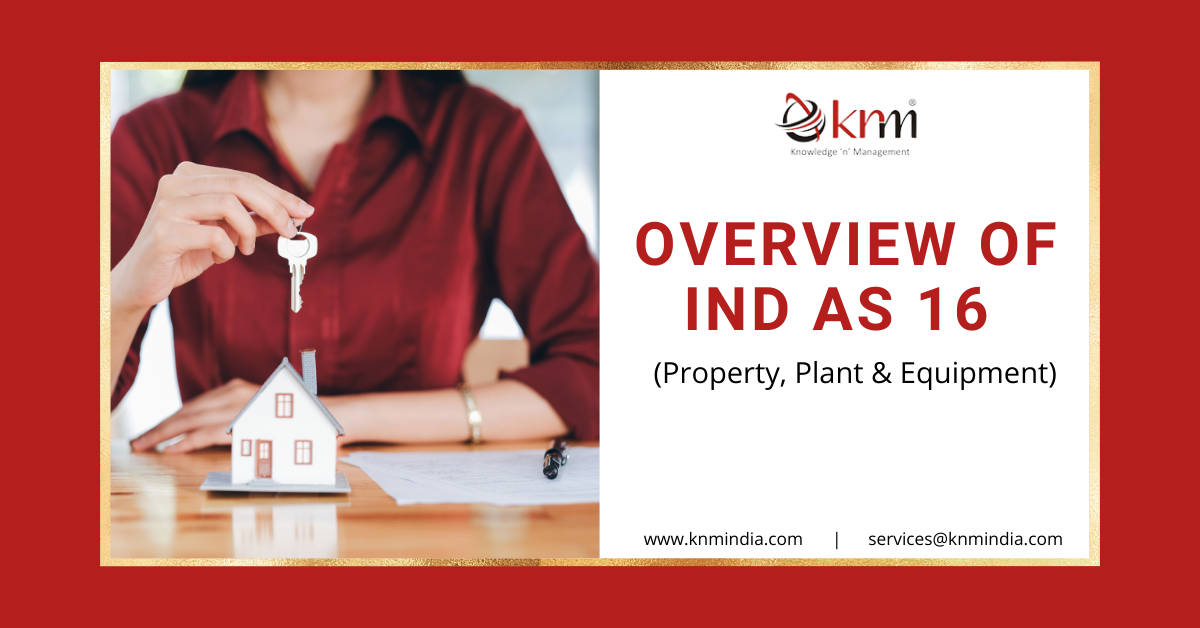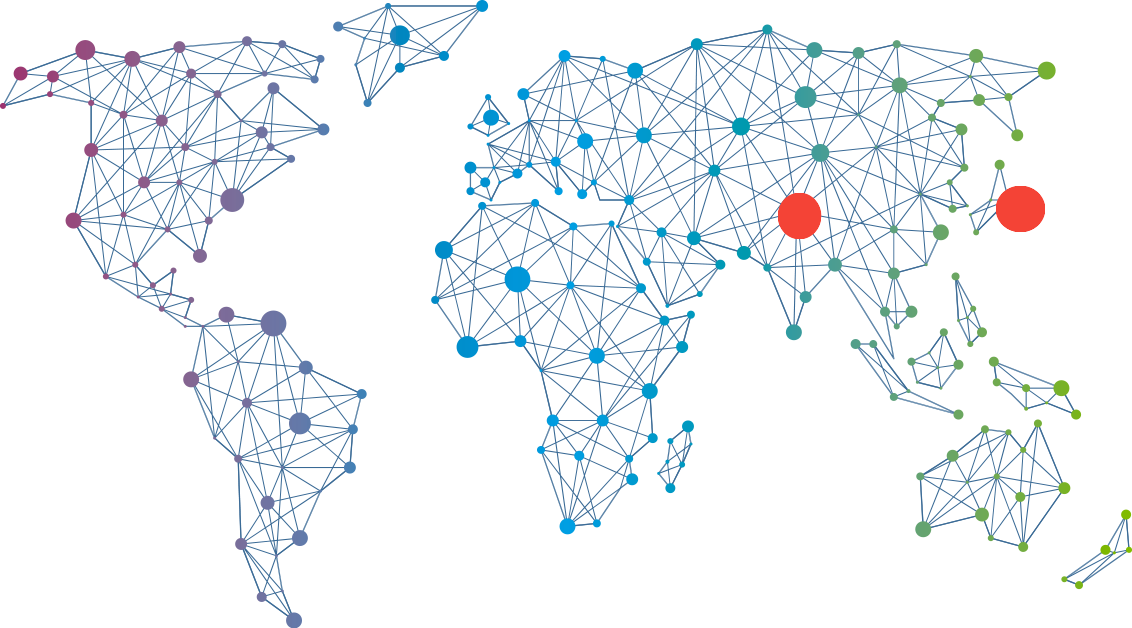Objective
This standard deals with:
- Recognition of the assets.
- The determination of the carrying amounts.
- The Depreciation charges.
- Recognition of impairment losses.
Non-Applicability of Ind AS-16
This standard does not apply to:
- PPE as held for sale.
- Biological assets related to agricultural activity other than bearer plants.
- Recognition and measurement of exploration and evaluation assets.
- Mineral rights and mineral reserves such as oil, natural gas and similar non-regenerative resources
Further, this standard applies to those PPE used to develop and maintain the assets mentioned in above 2-4.
Initial Recognition of PPE
The cost of an item of PPE shall be recognised as an asset if, and only if:
- It is probable that future economic benefits associated with the item will flow to the entity; and
- The cost of the item can be measured reliably.
Initial Measurement
An item of PPE that qualifies for recognition as an asset shall be measured at its cost.
The cost of the item of PPE comprises:
- Its purchase price including import duties, non-refundable purchase taxes, after deducting trade discounts and rebates.
- Any costs directly attributable* to bringing the asset to the location and condition necessary for it to be capable of operating in the manner intended by the management.
- The initial estimate of the costs of dismantling and removing the item and restoring the site on which it was located.
*Examples of Directly Attributable costs are
- Employee benefits cost arising directly from construction or acquisition of PPE
- Cost of Site preparation
- Initial delivery & handling cost
- Installation and assembly costs
- Professional Fees
- Costs of testing-whether the asset is working properly after deducting proceeds from sale of any product produced during testing period.
There are some costs which should not be included while measuring the cost of an item of PPE:
- Costs incurred while an item capable of operating in the manner intended by management has yet to be brought into use or is operated at less than fill capacity;
- Initial operating losses, such as those incurred while demand for the item’s output builds up; and
- Costs of relocating or reorganising part or all of an entity’s operations.
For Example:
XYZ Ltd incurs the following costs in relation to the construction of a new factory and the introduction of its products to the local market. The below table illustrates which of the items of cost can be capitalised as per Ind AS 16.
| Particulars | Rs. 000 (Cost Incurred) | Rs. 000 (As per Ind AS 16) |
| Site Preparation cost | 250 | 250 |
| Direct Material | 1700 | 1700 |
| Direct Labour cost, including 10,000 incurred during an industrial strike | 1160 | 1150 |
| Testing of various processes in factory | 400 | 400 |
| Consultancy fees for installation of equipment | 100 | 100 |
| Relocation of staff to new factory | 350 | – |
| General overheads | 450 | – |
| Estimated Costs to dismantle (at present value) | 250 | 250 |
| Total Cost to be Capitalised as per Ind AS 16 | 3850 |
Cost – Cash price:
The cost of an item of PPE is the cash price equivalent at the recognition date.
If the payment is deferred beyond normal credit terms, the difference between the cash price equivalent and total payment recognised as interest over the period of credit. (unless such interest is capitalised in accordance with IAS 23)
Barter Exchange:
If an asset is acquired in exchange for another non-monetary asset, the cost will be measured at the fair value unless
- The exchange transaction lacks commercial substance or
- The fair value of neither the asset received nor the asset given up is reliably measurable.
If the acquired item is not measured at fair value its cost is measured at the carrying amount of the asset given up.
For Example:
ABC Ltd owns land and building which are carried in its balance sheet at an aggregate carrying amount of 8 million. The fair value of such asset is 12 million. It exchanges the land and building for a private jet, which has a fair value of 17 million, and pays additional 4 million in cash. Show the necessary treatment as per Ind AS 16.
Solution:
Provided that the transaction has commercial substance, the entity should recognise the private jet at a cost of 16 million (being 12 million plus 4 million cash) and should recognise a profit on disposal of the land and building of 4 million, calculated as follow:
| Particulars | (Rs.’000) |
| Recognition of fair value of asset acquired (12,000+ 4,000) Less: Carrying amount of land and building disposed Cash Paid Profit on exchange of asset | 16000 (8000) (4000) 4000 |
Subsequent Measurement
An entity may choose any of two accounting models for its PPE:
- Cost Model: An entity shall carry an asset at its cost less any accumulated depreciation and any accumulated impairment losses.
- Revaluation Model: An entity shall carry an asset at a revalued amount. Revalued amount is its fair value at the date of revaluation less any subsequent accumulated depreciation and subsequent accumulated impairment losses.
Revaluation: An entity shall revalue its assets with sufficient regularity so that the carrying amount does not differ materially from its fair value at the end of the reporting period.
If an item of PPE is revalued, the entire class of the PPE to which the that asset shall belong shall be revalued.
A class of PPE is a grouping of assets of a similar nature and use in an entity’s operations. The following are examples of separate classes:
Land, Land and building, Machinery, Ships, Aircraft, Motor Vehicles, Furniture and Fixatures, Office Equipment and Bearer Plants
Frequency of revaluation: The frequency of revaluations depends upon the changes in fair values of the items of PPE being revalued. When the fair value of a revalued asset differs materially from its carrying amount, a further revaluation is required. Some items of PPE experience significant and volatile changes in fair value, thus necessitating annual revaluation.
Such frequent revaluations are unnecessary for items of PPE with only insignificant changes in fair value. Instead, it may be necessary to revalue the item only every three or five years.
Depreciation
It is defined as the systematic allocation of the depreciable amount of an asset over its useful life.
The items of PPE are usually are depreciated in order to maintain matching principle- as they are in operation for more than 1 year and therefore, their cost shall be spread among those years in order to match the revenue they help to produce.
Depreciable Amount:
It is the cost of an asset, or other amount substituted for cost, less its residual value.
Depreciation Period:
It is basically the assets useful life.
Useful life is the period over which an asset is expected to be available for use by an entity; or the number of production or similar units expected to be obtained from the asset by an entity.
Useful life and asset’s residual value (input to depreciable amount) shall be reviewed at least at the end of each financial year.
If there is change in the expectations comparing to previous estimates, then change shall be accounted for as a change in the accounting estimate in line with Ind AS 8 (no restatement of previous periods).
Difference between Ind AS 16 and AS 10
- Ind AS-16 does not apply to PPE held for sale due to having a separate Ind AS 105 for this purpose. But As-10 deal with PPE held for sale.
- Ind AS-16 deal with Stripping cost in surface mining for which it includes an appendix for guidance for treatment of stripping costs in surface mining. But AS-10 does not deal with this.
KNM India can assist you with a range of complete financial services that range from Corporate advisory to Transaction advisory, Pre-incorporation to Post-incorporation, Insolvency and bankruptcy code to Secretarial services, Assurance to Internal audit services, along with Market entry strategy to Foreign company registration in India. To discuss any of these please book your slot, or call us on +91-99105-04170 – or email us at services@knmindia.com to get a quick response.
The article has been contributed by
FCA Sunny Khanna
Sr. Manager-Audit
Further, we shall be happy to assist in case of any clarifications. For a deeper discussion, feel free to revert us at services@knmindia.com
Disclaimer: Information in this note is intended to provide only a general update of the subjects covered. It is not intended to be a substitute for detailed research or the exercise of professional judgment. KNM accepts no responsibility for loss arising from any action taken or not taken by anyone using this publication.


